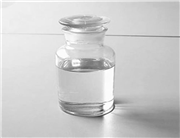Physical and chemical properties:
Cinnamaldehyde is commonly known as cinnamic aldehyde or cinnamic aldehyde. Light yellow oily liquid with cinnamon aroma, slightly soluble in water, soluble in ethanol, ether, chloroform, etc. Can evaporate with water vapor. It is easily oxidized to cinnamic acid in air. There are both cis and trans isomers, but both natural and synthetic cinnamaldehyde have a trans structure.
Cinnamaldehyde is the main component of cinnamon oil and cinnamon oil, such as cinnamon oil contains 70% to 75%, cinnamon oil contains 80% to 95%. It is also found in cinnamon leaves, cinnamon peel, patchouli, celery seed, lemon balm, rose oil, and hyacinth oil. Cinnamaldehyde is soluble in liquid sulfur dioxide and is red, insoluble in liquid ammonia and yellow, and its concentrated sulfuric acid solution is orange. Hydroquinone, pyrocatechol and pyrogallol were used to strongly inhibit its autoxidation. The cinnamic acid can be polymerized and produced by heating at 100 ~ 120℃ under ultraviolet light for 8 days. Reaction with thionyl chloride releases chlorine and sulfur dioxide to form α, β-dichloro-β-phenylpropanal. Phenylpropanol is produced in ethanol by azeotrope with lithium aluminum hydride or by reaction with aluminum isopropanol.
Purpose:
Cinnamaldehyde is one of the important pharmaceutical raw materials. It is often used in external drugs and synthetic drugs. Because it has the ability to promote blood circulation, make the skin warm, tighten the skin tissue, external massage can make the limbs, the body comfortable, the phenomenon of water retention can be fully improved, has a strong lipolysis effect. It is effective in softening and removing skin scar and fibroma. Relieve congestion. It has the effect of antithrombin, sedation, analgesia, antipyretic, anticonvulsive and so on. It also has the effect of inhibiting mold. In addition, cinnamaldehyde is one of the important spices, often used in soap flavor, preparation of mast, jasmine, lily of the valley, rose and other flavors. Used in food for fruit preservation, etc. The latest research shows that cinnamaldehyde can be used in chewing gum to kill bacteria and deodorize the mouth.
Production method:
Cinnamic aldehyde and sodium bisulfite adduct are separated by centrifugal method, washed with ether, then decomposed by dilute lye or acid solution, then distilled by water steam and vacuum distillation.
In the presence of sodium hydroxide, it is obtained by condensation of benzaldehyde and acetaldehyde: benzaldehyde, acetaldehyde, water and sodium hydroxide solution are mixed and oscillated at room temperature for a week, and the resulting oil is extracted with ethyl ether, benzyl drying, and vacuum distillation.






 China
China


